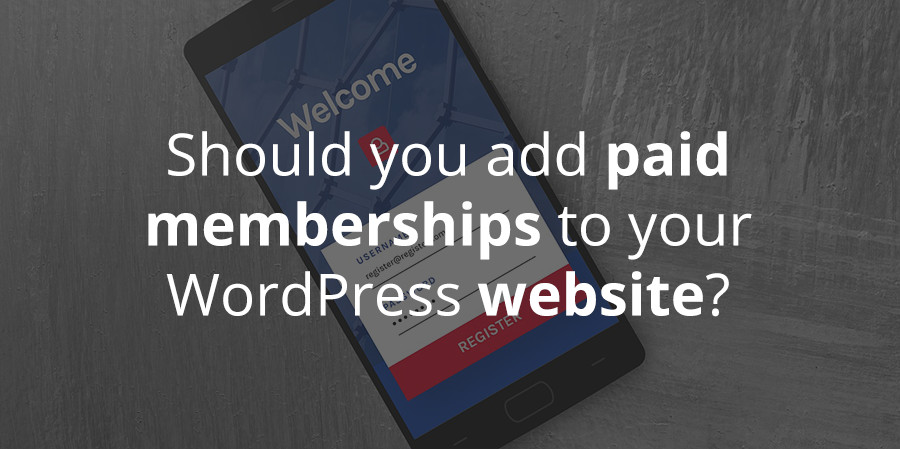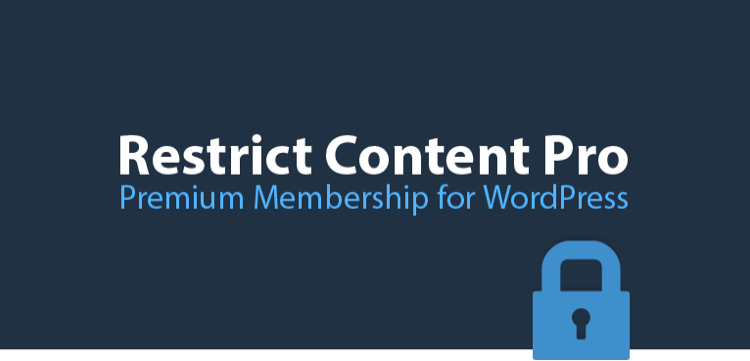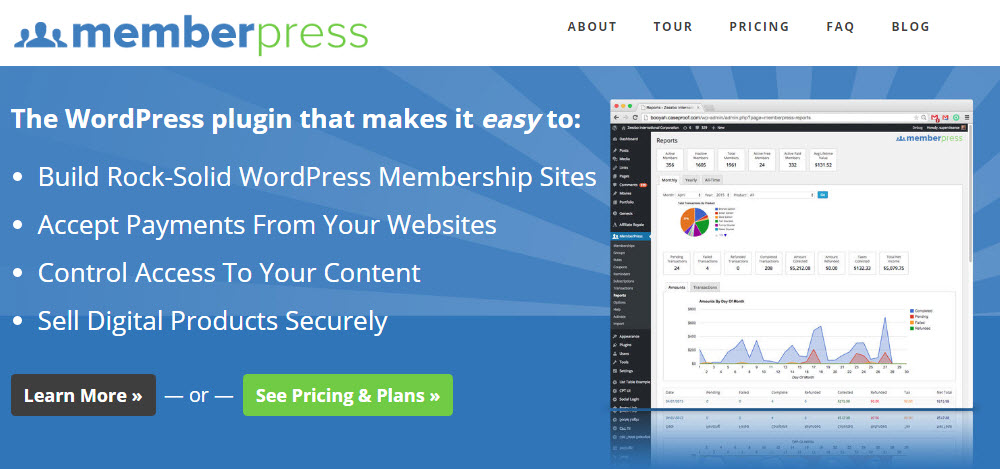Should You Add Paid Memberships to Your WordPress Website?

If you’ve been blogging for awhile, you’ve probably tried using display ads to monetize your blog. But, using display ads is not as lucrative nor easy as it once was. According to research, click-through rates for display ads have been on the decline recently. If you want a reliable way of monetizing your site, using paid content via paid memberships is a viable solution.
In this article, we’ll talk about why you should consider paid content, pros and cons of creating a “member-only” area for paid content, and share tips on how to make the transition process easier.
What Is Paid Content and Why to Consider It
Paid content is any content that’s placed behind a paywall, in a “member’s area” of your site. It can be extra articles, downloadable workbooks, templates, checklists, audio, video or any other type of content that adds extra value to your readers. You can also use it in conjunction with building an email list and promote it via squeeze pages, exit-intent popups, and other conversion-minded marketing strategies you might already be doing.
When done right, paid memberships can help you stand out from the rest of your industry, monetize your site, or add another source of revenue. It can also help you to drive more engagement on your site while allowing you to build better relationships with your customers. Let’s discuss the benefits more in-depth below.
You Can Offer Exclusive Content to Your Readers
Adding a paid content section for members allows you to offer your existing readers exclusive content that compliments what’s already there. It gives your existing content a better-perceived value and you can use anything from different mediums like audio and video to simple checklists or templates.
Adds Another Revenue Source
If you already sell products or services, a paid content area adds another revenue stream on a recurring basis. You can charge for access on a monthly, yearly, or even quarterly schedule or create different paid memberships that give access to different types of content.
Drives Engagement and Fosters Relationships.
Having a members-only area drives readers back to your site so they can access the content as it’s released. If you pair your member’s area with a plugin like bbPress vs BuddyPress, you can engage your members in discussions and allow them not only to interact with you but with other members as well.
What Are the Downsides of Paid Memberships?
There is no doubt that adding paid memberships with exclusive members only content can be beneficial for your site. However, there are a few downsides that you need to consider before jumping in.
Developing Extra Content Can Be Time-Consuming
If you plan on offering a paid content area as a bonus to freely available content, keep in mind that you will need to allocate some of your time to produce and develop extra content. As bloggers and business owners, we are already short on time so if you cannot dedicate some time to your schedule to work on more content, this solution may not be for you.
Paid Content Can Play a Role In Your SEO Rank
When done hastily, putting all your content behind a paywall can negatively affect your SEO. If all your paid content is set to be noindex, Google will have no interest in sending people to your site. An easy way to remedy this is to offer excerpts of your content before protecting the rest of the content and ensuring both can be indexed by search engines.
Members Area Requires Extra Maintenance
Finally, keep in mind that a members area will require extra maintenance. It’s another plugin to update and ensure it plays nicely with other plugins already on your site. You’ll also need to make sure that the paid content cannot be accessed or abused by unregistered users which may require a few additional security steps.
4 Tips for Transitioning to Paid Content

If you’ve determined that transitioning into paid content is the right choice for your site, here are a few tips to make the process a smooth experience for both you and your readers.
1. Give Your Readers Plenty of Notice
Before making an abrupt switch, make sure you explain to your readers why you decided to charge for accessing additional content well in advance. Give them a sneak peek of what they can expect and gradually transition into paid content. Giving them notice in advance allows them to understand your reasoning and ask any questions that might help them decide if they want to invest in your paid content.
2. Keep Some of Your Content Free
Consider keeping some of your content free so new visitors can get familiar with your brand before signing up to access the paid content. You can also use the free content to drive traffic to your site and promote the paid one.
3. Be Ready to Help Your Users
As you introduce paid memberships make sure your members know the payment terms, cancellation policies, and how they can get in touch with you. Consider creating an FAQ page where they can get immediate answers or add a Live Chat plugin on the signup page.
4. Choose the Right Plugin
Lastly, make sure you choose the right plugin to protect your paid content. There is no shortage of WordPress membership plugins that can handle this for you but do make sure they have the functionality you need. Here are some features to look for:
- The ability to display revenue statistics – this will help you measure how successful your membership site is and which content or plans are performing best so you can plan on adding more of it in the future
- Different payment methods – one of the worst things you could do is offer a single payment method. People are very protective with their financial information so make sure you offer several payment methods so they can choose the one they feel most comfortable with
- Flexible pricing – if you’re just getting started, choose a plugin that can support your members area as it continues to grow, rather than investing in the most expensive plan immediately. This will save you money in the long run and adjust accordingly.
- SEO-friendly – choose a plugin that won’t mask or cloak your content for the search engines while still allowing non-subscribers to see a preview of the content.
- Customization options – make sure to choose a plugin that will integrate seamlessly with your website and maintain brand recognition so your readers can recognize the paid content section as an area of your website.
- The ability to handle receipts and refunds – dealing with payments is not easy, so opt for a plugin that allows you to not only to collect payments but also send receipts to your users. Make sure you can issue refunds if needed or cancel someone’s subscription easily as well as control access for all your members.
Still not sure which plugin to use? Here are our top recommendations to add paid memberships to your WordPress website.

Restrict Content Pro is one of the top membership plugins available. Set up simple free or paid memberships and subscriptions, track users and renewals with built-in reporting, or add more features with add-ons for form building, BuddyPress, AffiliateWP affiliate management system, Easy Digital Downloads e-commerce, Campaign Monitor, bbPress and more Read our Restrict Content Pro review to learn more.

Our second recommendation is MemberPress – a complete website membership and subscription management plugin. MemberPress is quick and easy to setup. Just install, add plans or membership levels, select your payment gateways and add your registration/login links to your site. The plugin also includes email integration, coupon or discount settings, built-in analytics and more. Still not sold? See how easy it is to use in our MemberPress review.

And last up – Paid Member Subscriptions Pro is another option. This plugin offer a quick way to accept payments, create subscription plans, add a paywall to premium content and more. Plus WooCommerce compatibility, easy to use shortcodes and built-in reports make this plugin a great choice. There is a free version available that you can use to test the waters, or you can (like the other options we’ve mentioned) have a look at our Paid Member Subscriptions review to view more plugin features.
But this is just the tip of the membership plugin iceberg. There are tons of great WordPress membership plugins, take your time to read the features, plugin compatibilities (since you’ll want it to work with any plugins you currently have installed on your WordPress site) and most importantly recent customer reviews for each to find the plugin that’s right for you.
Adding paid content to your site is a great way to engage your readers and monetize your content. However, it does require a little extra maintenance and time investment to make it worthwhile. Use the tips in this article to help you decide if you should transition into using paid content.


